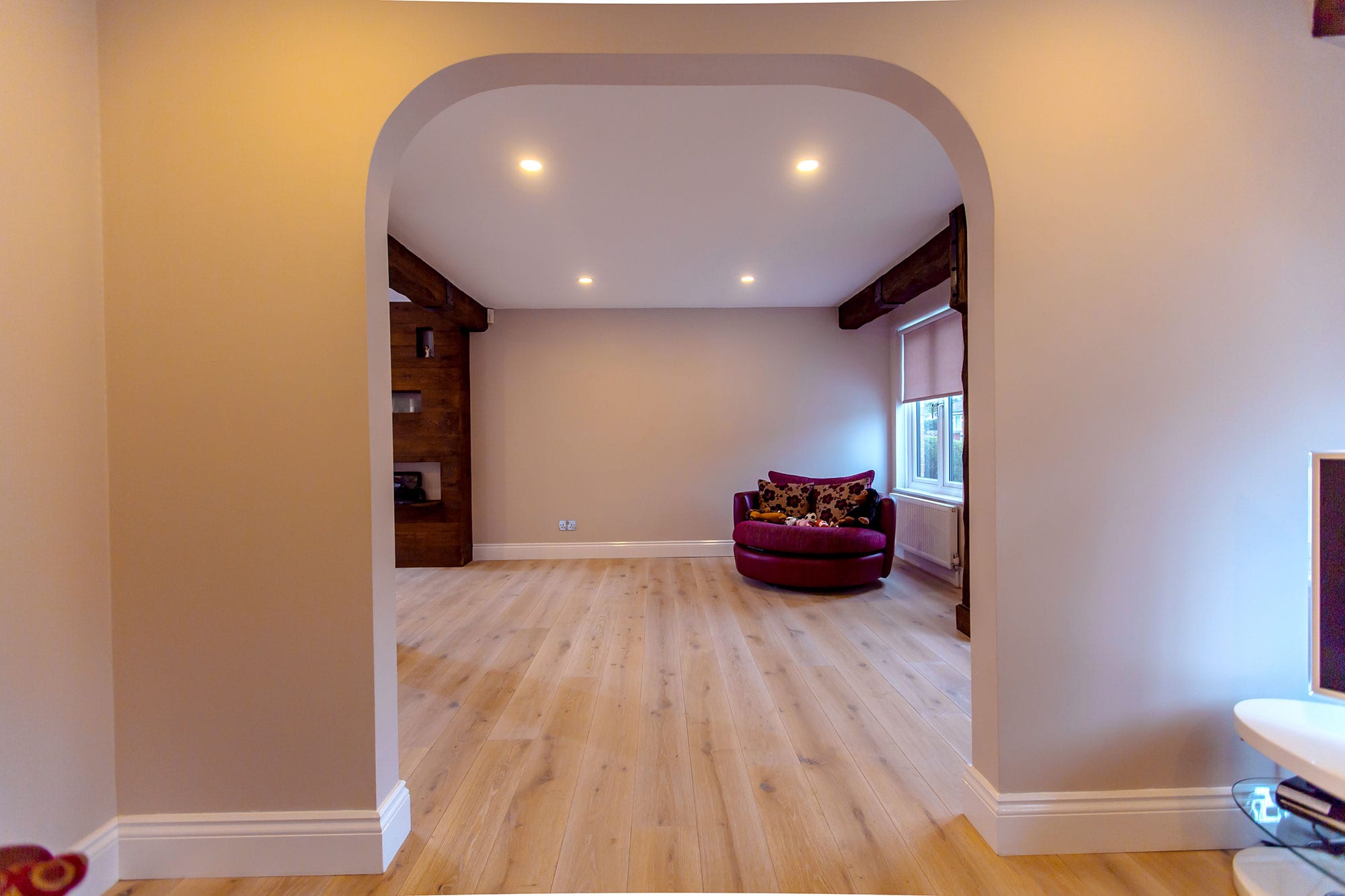When carpenters or contractors install wooden flooring in any room of a home, it is fitted with an expansion gap around the perimeter of it. This is the edge of the wooden flooring that would otherwise touch the fireplaces, radiator pipes, doorways, and/or walls of your room. It is important for all wooden flooring never to make direct contact with any fixed objects like these.
Now you might be wondering, what is the purpose of an expansion gap? Well, the purpose relates to wood’s natural ability to expand when it is exposed to airborne moisture. If the interior of your property contains any amount of humidity, then your wooden floors will absorb the moisture. Once that happens, all the wooden planks of the floor will start to expand.
If you have an expansion gap in place, then the expanding wood of the floor won’t get damaged by expanding into the wall or another physical object in the way. Instead, the expanding wood will fill the expansion gap without suffering any damage. You see this situation a lot with solid hardwood floors. But there are engineered hardwood floors which are made to withstand temperature changes to some degree.
Obviously, you don’t want your expansion gaps to be too big or else they’ll look unattractive. But even if you have normal size expansion gaps, it is not a good idea to leave them exposed. They could easily accumulate dust, dirt, and debris if they’re not covered completely. Most contractors will use skirting boards to cover the expansion gaps of the wood floor. In other cases, they may use pipe covers, beading, or T-mouldings. It depends on which physical objects are present.
Skirting boards are the easiest and cheapest solution for covering expansion gaps. They are usually made from either vinyl or wood material. The boards are placed up against the lowest area of the wall surface. They’re kind of like a barrier between the wooden floor and the wall. The bottom of the skirting boards will cover the expansion gap completely. That is why you cannot see expansion gaps when skirting boards are present.



